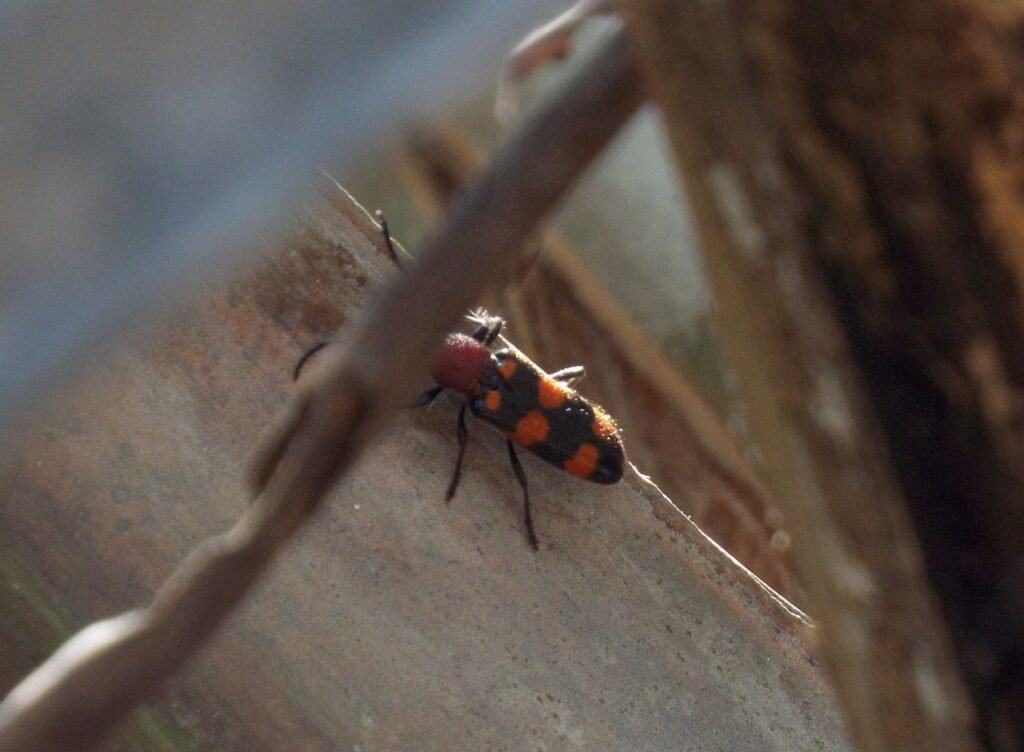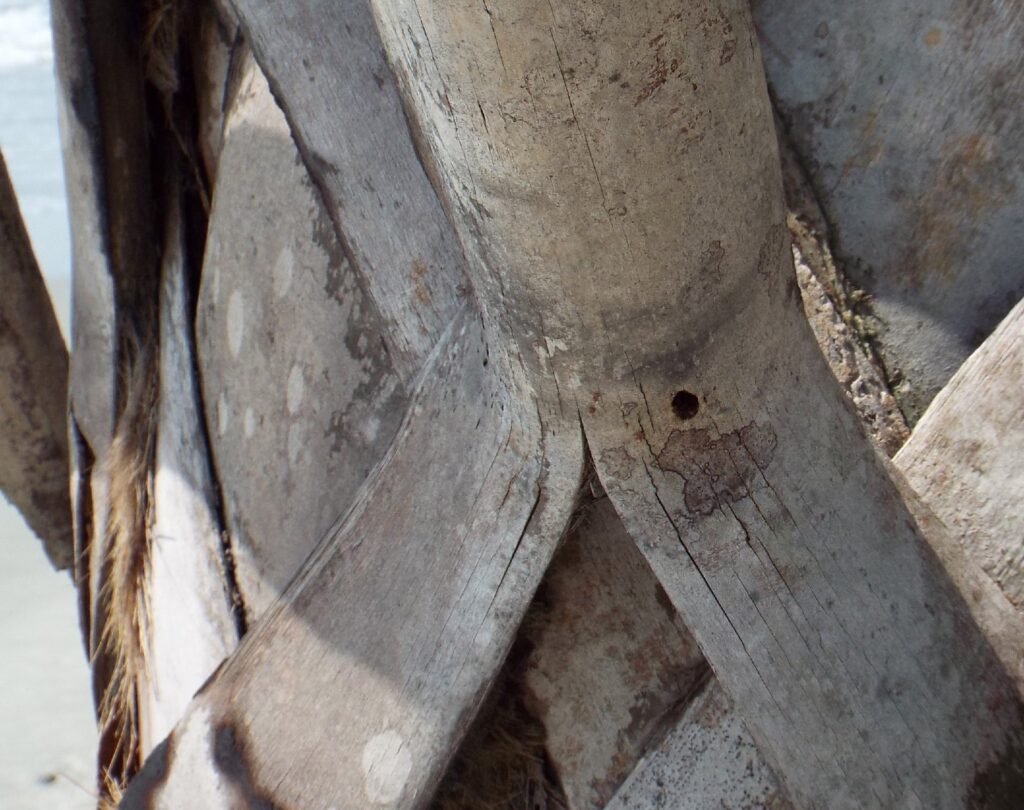


This week for Flora and Fauna Friday we have a secretive dichromatic beetle that recently made its way to South Carolina, Zagymnus clerinus. This is a critter that not much was known about until recently. I’ve studied it extensively and published my research on it a few years back. Zagymnus clerinus doesn’t have a common name but I’ve taken to calling it the Palmetto Boot Borer.
Zagymnus clerinus is a species of beetle in the Longhorn family, Cerambycidae. Longhorn beetles are so named for their prominent antennae, long and broad like the horns of a Texas Longhorn. They’re an incredibly diverse clade of insects and many of them share a similar shape, a nocturnal nature, and a taste for freshly dead wood. The Palmetto Boot Borer is about half an inch long from backend to forehead. Its body is a glossy jet-black accented by candy-orange bars and a thorax of faded-burgundy. Most longhorns are not so strikingly colored and this gives us a clue about the Palmetto Boot Borer’s ecology. Insects that want to hide are colored cryptically in mottled browns and grays. However, an insect that’s red and black is trying to catch someone’s eye. Whose eyes? Birds’ eyes. From this we can infer the primary predators of our beetle are birds, likely Mockingbirds and Flycatchers, and since these birds are diurnal, so must be our beetle. Otherwise, why would it be colorful if it only flies at night? Typically, red and black patterns warn that an insect is poisonous but, given their diet, I suspect this is just a bluff by our beetle.
The Palmetto Boot Borer feeds on Palmetto trees. However, fear not. It is not a danger to our state tree. This beetle only eats dead fronds as a larva. Females lay eggs in crevices they chew into palmetto boots. (A boot is the base of a palm frond.) Those eggs soon hatch and start boring their way into the heart of their frond. After a year or more of eating frond fibers, the grub will make its way to the edge of the boot to pupate. The following June, the beetle will break free of its tropical coffin by chewing an oval-shaped hole in the side and escaping into the sunshine. As far as we know, adult beetles don’t eat and live less than a month.
Zagymnus clerinus is interesting in that it was never recorded from South Carolina until 2007. I was unable to find any evidence of it being in the state before 1995. Nowadays, its handiwork, in the form of those elliptical emergence holes on palmetto boots, can be found throughout Charleston County. It is especially common along the North Edisto River and on Edisto Island. So where did it come from? The species is native to Florida and is found in any habitat where there are Cabbage Palmettos. Similar habitat is common throughout the Barrier and Sea Islands of South Carolina but oddly not our beetle until just recently. How did it get here then? In recent decades, residential development in the Charleston area has skyrocketed and the demand for landscape plants followed suit. I believe the Cabbage Palmetto’s prowess as an urban landscape tree fueled its nursery cultivation in Florida. Those nurseries packed with palmettos were an equally suitable nursery for the Palmetto Boot Borer. When those nursery palms were brought to Charleston, the beetles came along for the ride by the thousands. From there it was just a matter of time before those out of state beetles made the jump into our native stands of Palmetto and established a foothold. Today the Palmetto Boot Borer is here to stay but luckily the Palmettos don’t seem to mind too much.